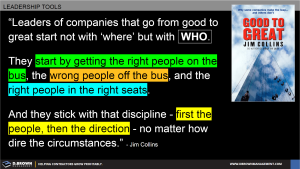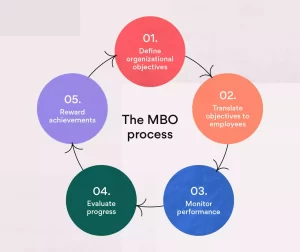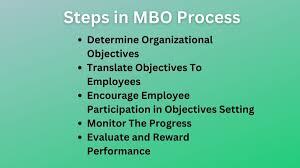“Surround yourself with the best people you can find, delegate authority, and don’t interfere as long as the policy you’ve decided upon is being carried out.”— Ronald Reagan
Introduction
 There are two different ways to accomplish a big task. One way is to assemble all the key people together and give them the task to complete it. The second option is to first identify what you want to achieve and then identify the right people for that task. Once the right people are identified, then, they should be assembled together so that they can decide on the further journey together. There is a very high possibility that in the second case, they will be able to accomplish the task with much more success than the first option.
There are two different ways to accomplish a big task. One way is to assemble all the key people together and give them the task to complete it. The second option is to first identify what you want to achieve and then identify the right people for that task. Once the right people are identified, then, they should be assembled together so that they can decide on the further journey together. There is a very high possibility that in the second case, they will be able to accomplish the task with much more success than the first option.
Read More: https://bit.ly/ObeyaRoom
Objective
MBO stands for Management by Objectives and is a framework designed to manage businesses based on their needs and goals. MBO goals are tailored to meet the needs of today’s fast-growing businesses and fast-paced work environments.
MBO defines key company goals and uses them to determine employees’ objectives. MBO processes identify an employee’s main objectives, which are later graded with group input. This helps all company contributors see their accomplishments in connection to the company’s top priorities as they carry out their tasks. It reinforces alignment between activity and outcome, which dramatically increases productivity.
Once you read this blog, you will understand what is Management by Objectives, how it is linked with sustained success for any organization, why it is important for any organization and how to implement it effectively in your organization.
Read More: https://bit.ly/DOJOCentre
Definition:
Efficiency (Cl 3.7.10): Relationship between the results achieved and the resources used.
Effectiveness (Cl 3.7.11): The extent to which planned activities are realized and planned results are achieved.
Read More: https://bit.ly/5SSteps
Detailed Information
What is MBO?
Author Peter Drucker was the first person to use the term ‘management by objective’. That was way back in 1954 in a book called The Practice of Management.
 MBO is an acronym for Management by Objectives. It can be defined as a management system that measures employees’ performance against a series of set targets or goals to gauge their overall performance in their role. These objectives are often tied into those set for the overall business or department.
MBO is an acronym for Management by Objectives. It can be defined as a management system that measures employees’ performance against a series of set targets or goals to gauge their overall performance in their role. These objectives are often tied into those set for the overall business or department.
Management by objectives (MBO) uses a set of quantifiable or objective standards against which to measure the performance of a company and its employees. By comparing actual productivity to a given set of standards, managers can identify problem areas and improve efficiency. Both management and workers know and agree to these standards and their objectives.
Read More: https://bit.ly/HoshinKanriPolicy
Why it is Important?
According to Peter Drucker, people are most motivated to pursue a goal when they set it for themselves, and personal development planning follows the idea of helping to formulate, control and regulate the process of moving toward a chosen mission. Although, both employees and managers often treat plans like standard and meaningless paperwork.
 The MBO approach is implemented to ensure that the employees get a clear understanding of their roles and responsibilities, along with expectations, so that they can understand the relation of their activities to the overall success of the organization.
The MBO approach is implemented to ensure that the employees get a clear understanding of their roles and responsibilities, along with expectations, so that they can understand the relation of their activities to the overall success of the organization.
One of the main benefits of Management by Objective is its top-down approach. Company goals are set by top management and made transparent. Everyone knows the overall objective(s) of the company and every employee has a say in determining the best way to get there. Each employee has a clearly defined role to play and measurable objectives to achieve. Controls, checks and balances are built into the MBO process via frequent reporting and regular evaluation of performance metrics.
Read More: https://bit.ly/DailyWorkManagement
How to Implement it?
MBO is a result-oriented strategy. Therefore, the outcomes are easily monitored and help the organization to understand if its goals are achieved.
The idiom “It takes a village” refers to the idea that success stems from collaboration. As a project manager, you rely on your village—or your team—to complete projects. Companies also rely on the collective whole to meet their objectives.
- Define Organizational Objectives
The first course of action is to define organizational objectives. The top management should be clear that what they want to achieve in the next 3 to 5 years. Based on that, the senior management should define tangible and nontangible objectives.
 Translate Objectives into Measurable Goals
Translate Objectives into Measurable Goals
Once the management has defined their key objectives, the next step is defining the objectives for the employees by using a top-down approach so that company objectives can be translated into individual goals for each member. The organization should always ensure that the goals should be SMART (Simple, Measurable, Achievable, Realistic, and Time-bound).
When team members have personal goals that are interlinked with larger company goals, they understand how they fit into the bigger picture. As per recent research, only 26% of employees have a clear understanding of how their individual work relates to company goals and just 16% say their company is effective at setting and communicating goals.
3. Monitor Performance
Once the team members start working towards their specific objectives, the management should regularly monitor their performance. The key objective of monitoring the performance is to interlink it with the overall objective of the management. Monitoring team member performance helps to assess team member productivity, bottlenecks, resource requirement, competency gaps etc.
4. Evaluate Progress
The performance of each employee should be evaluated periodically (monthly, quarterly) by setting up performance appraisals. It allows giving personal feedback on what each team member is doing well and where they can improve on their individual goals so they can better serve the company as a whole. This step in performance management is crucial because it emphasizes effective communication between management and the team.
5. Feedback and Reward Accomplishments
The last step in the MBO system is rewarding the team for their achievements. This increases the morale of the team and keeps them motivated to work hard during the next MBO process. The organization can reward its team in both intrinsic and extrinsic ways. These rewards may be tangible or intangible, but they’ll likely incentivize team members to continue working toward their individual objectives and the company.
Intrinsic motivation can be provided by challenging team members, recognizing their hard work, ensuring they feel a sense of belonging and offering team-building activities. With these actions, the team members will develop self-confidence and self-motivation.
Extrinsic rewards may include a paid bonus, a salary increase, promotions, extra responsibility in their current role, or with paid time off.
Read More: https://bit.ly/BalancedScorecard1992
Example: Improve Financial and Sales performance
- Expand sales by 10%
- Increase Gross Margin by 10%
- Increase assets to debt ratio by 15%
Market share
- Become a member of the Top 3 in your sector
- Raise brand profile by 25%
Customer service
- Increase customer satisfaction (CSAT) by 90%
- Increase customer retention rate to 92.5%
Sales performance
- Increase win ratio by 10%
- Expand sales abroad by 10%
- Achieve the new bookings target of 50 per month
- Hit the win rate of 20%
- Decrease sales cycle to three months
Operations
- Improve productivity by 10%
- Reduce internal rejection by 10%
- Reduce carbon footprint by 5%
Read More: https://bit.ly/PDCASDCA
 To reap the full benefits of MBO, the organization should take care of the following 5 key points
To reap the full benefits of MBO, the organization should take care of the following 5 key points
- Secure top management conviction and support including budget
- Commit the entire organization to MBO to instill performance orientation throughout
- Set clear objectives that are realistic and achievable
- Be transparent and train everyone toward MBO
- Be flexible. Business reality can change quickly. MBO processes must allow for goal adjustment
Read More: https://bit.ly/KaizenMasaakiImai
Advantages and Disadvantages of MBO
The management by objectives technique has several key strengths, including:
- Teamwork – As MBO drives each member of staff towards business-focused objectives, it can lead to improved communication and teamwork.
- Clarity – MBO sets out straightforward business goals and gives each member of staff a clear set of tasks to help meet them.
- Empowerment – Equipped with clear objectives related to the wider business strategy, staff at all levels of the organization feel involved, empowered and indispensable.
- Efficiency – With staff goals geared towards business success, managers know all staff is facing the same direction.
- Customization – Managers tailor each set of objectives to individual staff members — based on their specializations, skills, qualifications and career goals.
However, MBO can present several disadvantages too:
- High-Pressure – With a measurable, business-aligned set of goals, staff can feel under pressure.
- Impersonal – Though goals can be tailored to individual staff skills, they might omit personal and career development considerations.
- Overfocused – Focusing exclusively on business goals can detract from other important elements of your operations.
Read More: https://bit.ly/QualityCircle
Industry Challenges:
- The performance indicators at the process/function/individual level are not aligned with the overall objective of the organization
- There is no monitoring and evaluation mechanism to check whether the linkage of objectives from top management to all the employees is effective or not
Read More: https://bit.ly/DifferenceCoachingMentoring
References:
ISO 9001: 2015
ISO 9002: 2016
ISO 9004: 2018
IATF 16949: 2016
Industry Experts
This is the 180th article of this Quality Management series. Every weekend, you will find useful information that will make your Management System journey Productive. Please share it with your colleagues too.
In the words of Albert Einstein, “The important thing is never to stop questioning.” I invite you to ask anything about the above subject. Questions and answers are the lifeblood of learning, and we are all learning. I will answer all questions to the best of my ability and promise to keep personal information confidential.
Your genuine feedback and response are extremely valuable. Please suggest topics for the coming weeks.
